LDNIO 3 power socket and 6 USB 3.4A SE3631
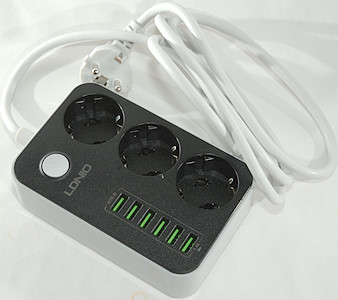
Official specifications:
-
Brand: LDNIO
-
Model: SE3631
-
USB Port: 6 USB Port
-
Plug: EU Plug
-
Dimensions: 138*90*43mm
-
Total Power: 17W
-
Rated Power: MAX 2500W MAX 250V*10A
-
Output: 5V 3.4A (Max)
-
Nominal Voltage: AC100-250V
-
Length: 5.24ft/1.6m
I got it from banggood


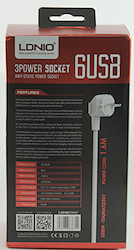

I got it in a retail cardboard box with specifications on it.
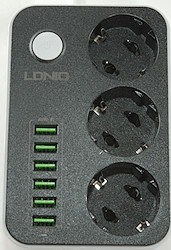
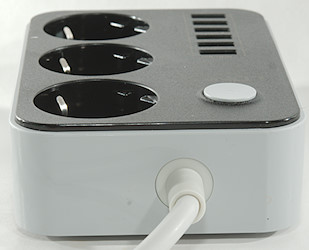
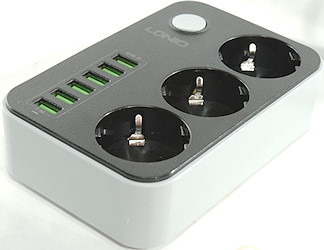
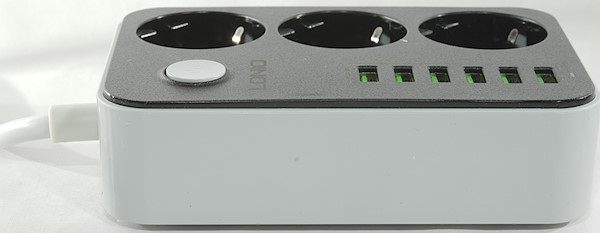

There is a weak white indicator lamp at the bottom of the usb connectors.
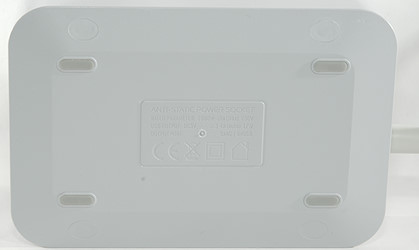
Measurements
-
Power consumption when idle is 0.15 Watt
-
USB outputs is auto coding with Apple 2.4A and DCP
-
All usb outputs are in parallel
-
There is no individual port overload protection
-
The switch turns usb on/off.
-
Weight: 380g
-
Size: 163 x 92 x 42mm this includes power cord strain relief
-
Power cord is 1.5m long, excluding plug and strain relief.
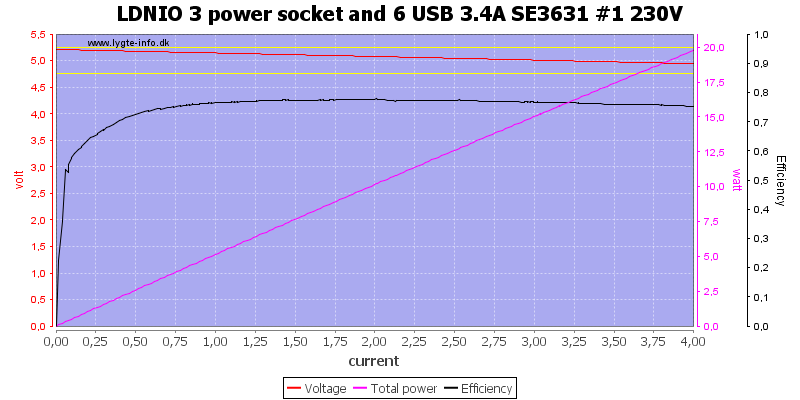
The output can deliver more than 4A
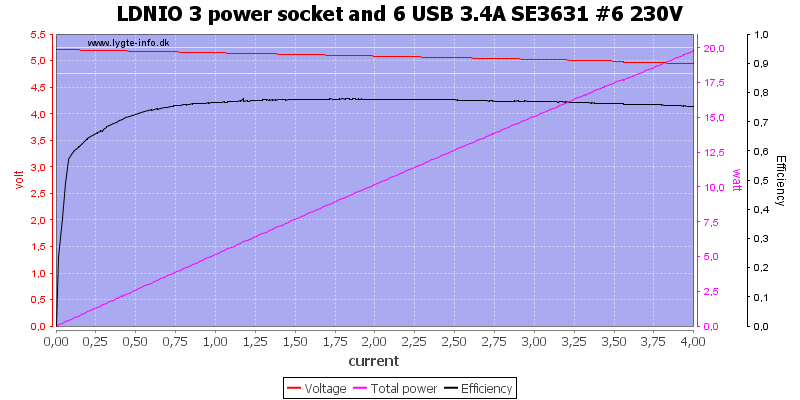
It is the same with this output
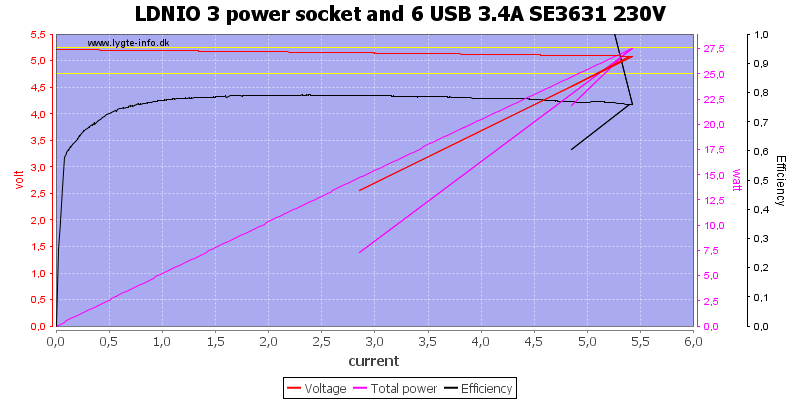
Running all outputs in parallel the overload limit is at around 5.5A, but it do not just turn off.
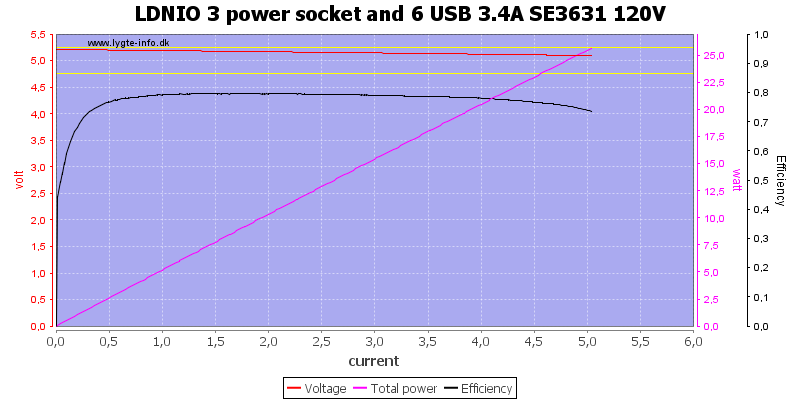
At 120VAC the maximum current is slightly lower.
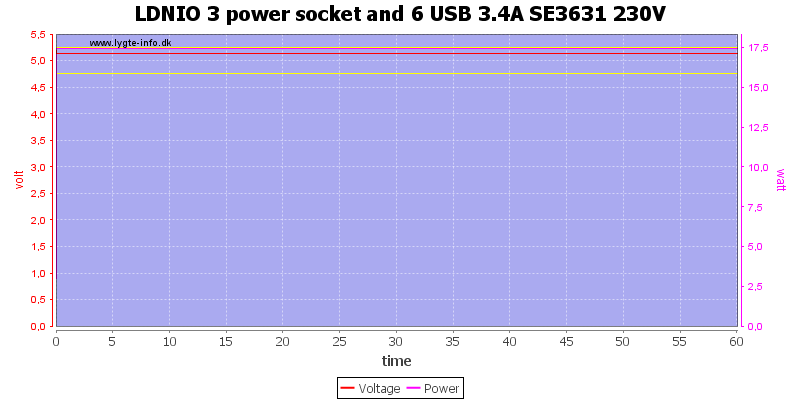
Running 1 hour at 3.4 worked fine, but see below.
The temperature photos below are taken between 30 minutes and 60 minutes into the one hour test.
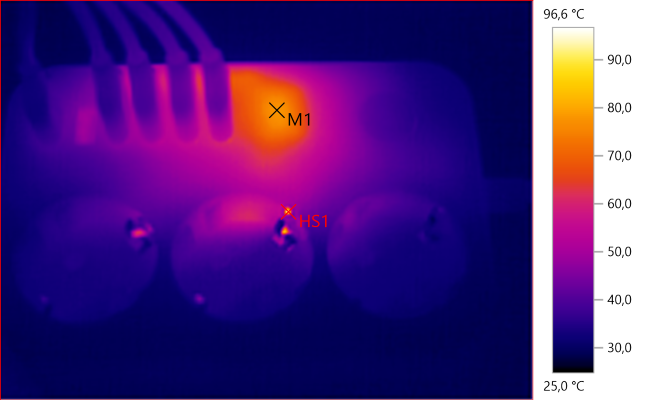
M1: 77.8°C, HS1: 96.6°C
I wonder about HS1, it is a rather high temperature.
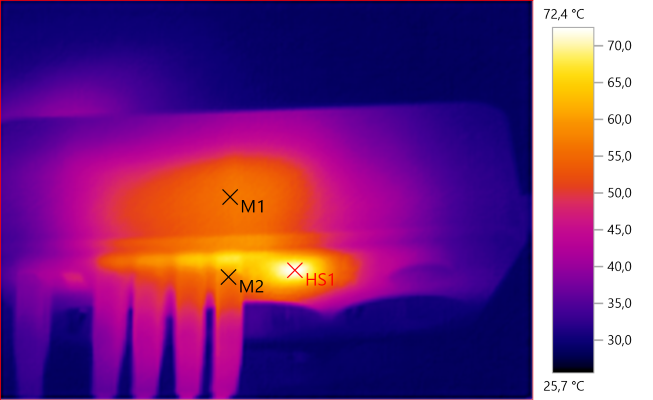
M1: 56.5°C, M2: 57.8°C, HS1: 72.4°C
The electronic inside is heating the box significantly.
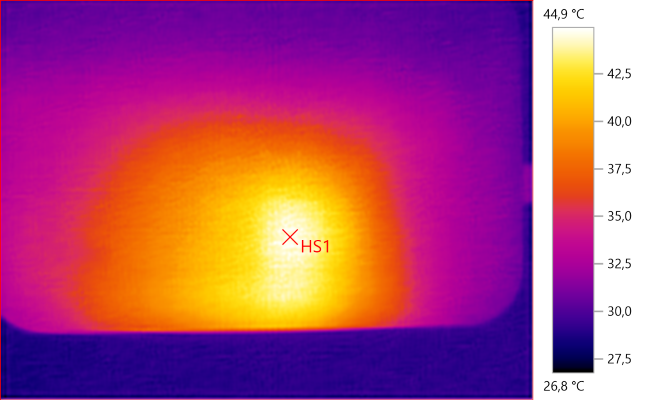
HS1: 44.9°C
The bottom also gets a bit warmer.
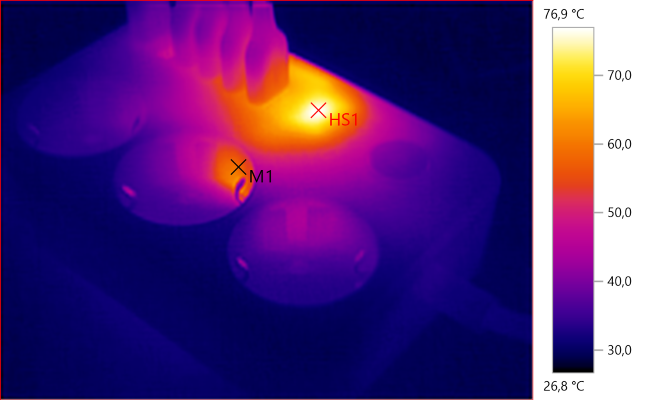
M1: 58.3°C, HS1: 76.9°C
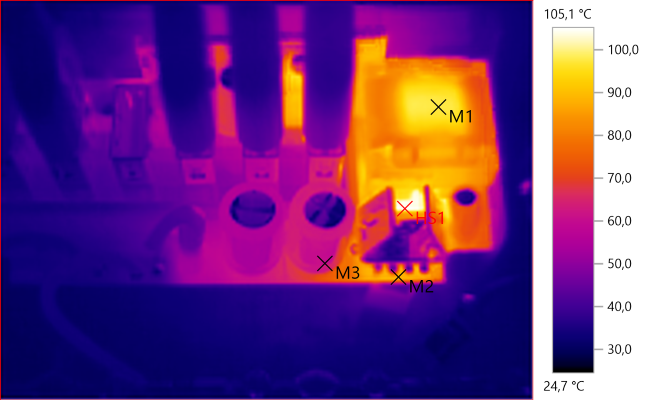
M1: 97.8°C, M2: 87.7°C, M3: 60.3°C, HS1: 105.1°C
After taking the lid off I did a 30 minute run and took some picture of the electronic.
The transformer gets very hot (It may be rated for this high temperature).
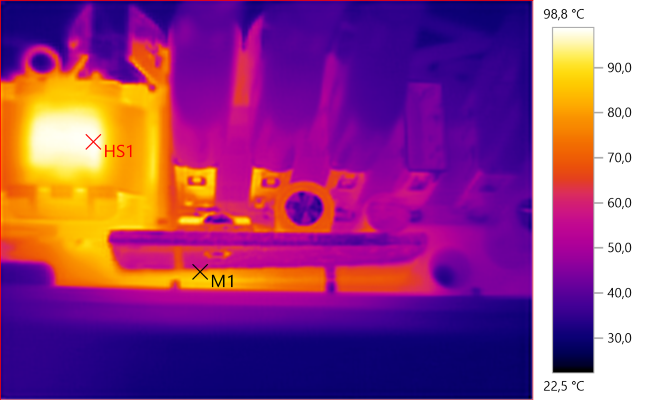
M1: 77.9°C, HS1: 98.8°C
The rectifier do also get rather hot (The camera cannot show the temperature of the heatsink).

At 0.5A the noise is 29mV rms and 1174mVpp.

At 1A the noise is 33mV rms and 1165mVpp.

At 2.5A the noise is 33mV rms and 953mVpp, this is a lot of peak noise, most of it is probably radiated noise due to lack of mains filters.
A look at the sockets
-
Shutters in mains output do not work.
-
With 16A in cable the voltage is 1.65V drop for cable and shorts (1.84V after 15min)
-
The switch turns the sockets on/off.
-
There is no overload fuse.
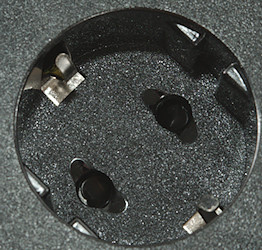
The socket is the European type and it has shutters.
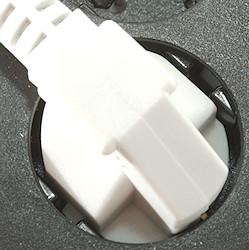
The supplied plug matches the socket fine, both are correct size.
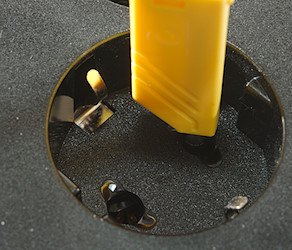
The shutters do not work, I could easily plug one banana plug in.
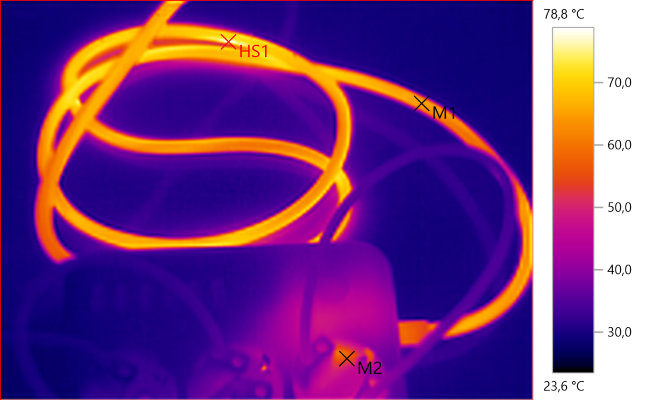
I tried running the mains cable at 16A for 15 minutes, it get rather hot. Running at the rated 10A would probably not be a problem.
M1: 64.7°C, M2: 55.7°C, HS1: 78.8°C
Tear down
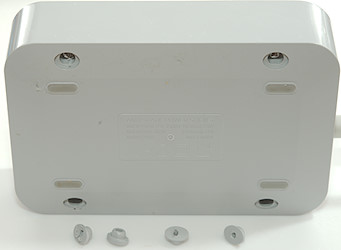
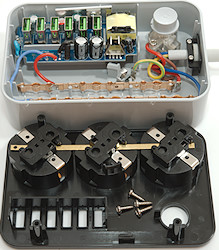
The bottom did not have any screws, but it looked like there was 4 plugs. I had to drill a hole in them before I could remove them, they where glued. Behind them was the screws.
This is a good way to seal the box, it requires some dedicated work to open it and it can be closed again.
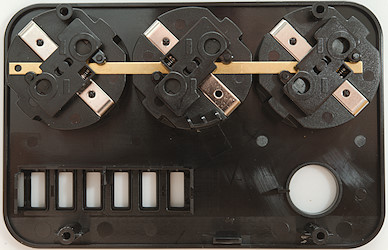
The front has the sockets with the useless shutters and the earth rail.
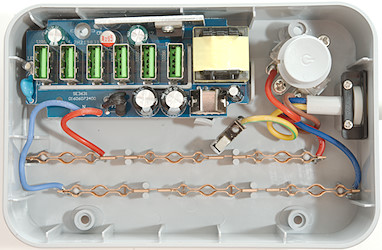
The back has the switch, the live and neutral rails and the electronic for usb.
The earth connection is done with a spring, I am not sure that is a safe way to do it.
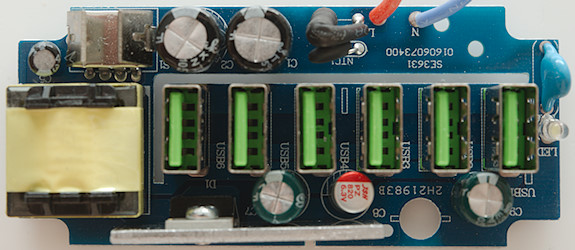
The mains input goes to a fuse (F1) and a inrush current limiter (NTC1), the mains switcher (S1) is hidden below a heatsink. The safety capacitor (C6) is placed close to the led (LED1). The rectifier diode (D1) is on a heatsink and hidden below the transformer is a opto coupler for feedback.
There is no filter inductors on either input or output.
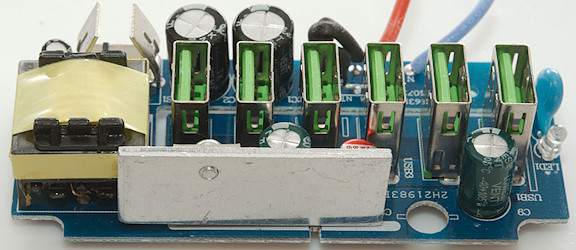
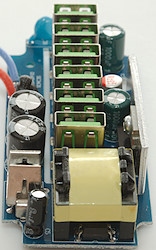
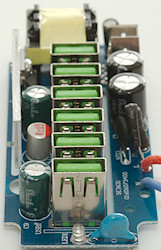
The opto coupler can be seen on the first image here.
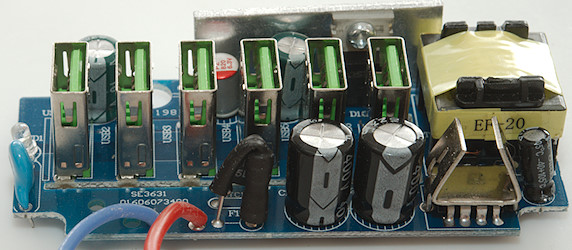
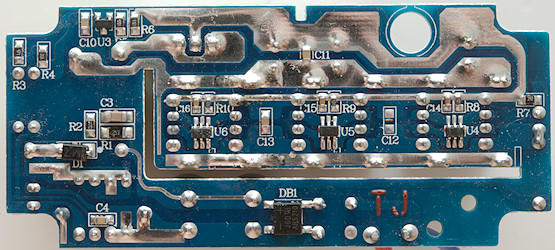
On this side is the bridge rectifier (BD1), the reference (U3: 431) and 3 dual auto code chips (U4, U5, U6: RH792A)
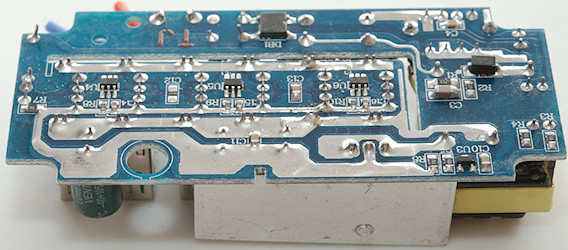
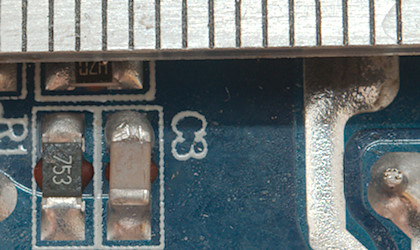
The distance between mains and low volt side is slightly low at around 5.5mm
The charger passed the 2830 volt and 4242 volt test, this means it is it is fairly safe.
Conclusion
At first glance it looks good, but when getting into the details it is not. A total usb current of 3.6A is maybe enough for two plugs, not for 6 plugs and it run very hot even at this low current. The noise is high due to no filtering. I am surprised the auto coding is missing Samsung (This may be because Samsung do not use this coding anymore).
The mains part is missing a overload protection (This is not required) and has non-working shutters.
Notes
Index of all tested USB power supplies/chargers
Read more about how I test USB power supplies/charger
How does a usb charger work?